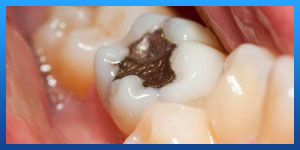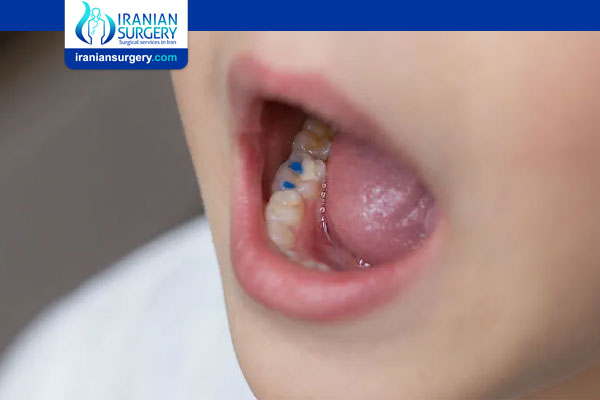What To Do If Your Filling Falls Out?
What Do I Do If My Dental Filling Falls Out?
Dental fillings don’t last forever and, sometimes, a filling can fall out. There are many reasons why a filling can come loose. Some of the most common reasons are due to:
. new decay around the filling
. chewing too hard
. biting into hard or crunchy foods
. grinding your teeth (bruxism)
. trauma to the tooth or root
. a chemical reaction that loosens the bond of the filling to the tooth
If a filling falls out, the first step is to call your dentist to set up an appointment. In the meantime, until you see your dentist, it’s important to protect the tooth involved.
What Should You Do If Your Filling Comes Loose?
If your filling comes loose or falls out, it’s important to get it replaced as soon as possible. Here’s what to do.

Read more about : Tooth pain weeks after filling
Read more about : What is the best material for dental fillings?
What Should You Do If Your Dentist Can’t See You?
Usually, a dental office will do its utmost to see you in a timely manner. But what if a dentist is unable to see you soon? Obviously, In that case, you should find a new dentist.
If your dentist can only see you in a couple of days, they’ll likely have specific recommendations and suggestions for what to do until your appointment.
What should you do if you’re in pain?
If you have to wait a day or two to see your dentist and you’re in pain, consider the following:
. Take an over-the-counter nonsteroidal anti-inflammatory drug (NSAID) like ibuprofen to reduce pain and swelling.
. Apply clove oil to the exposed tooth and gum or use a whole clove. You can buy clove oil online or at a pharmacy.
. Use a cold compress or an ice pack for 15 minutes at a time to relieve pain and swelling.
. Apply a topical numbing agent, like Anbesol or Orajel, to temporarily numb the tooth and gums. Grab some online.
Can A Loose Filling Cause Complications?
If a filling isn’t replaced within a few days, it could cause damage to the unprotected tooth. Bacteria and food particles can stick into the empty space, causing decay. Also, the missing filling can expose dentin, the second layer of tooth under the hard outer enamel. Dentin is softer than enamel and more susceptible to decay. Exposed dentin can also be very sensitive.
Further decay or damage to the tooth may require more extensive repair work, such as a crown, root canal, or extraction. That’s why the sooner you can get the filling replaced, the better.
Will You Need to Pay for a Replacement Filling?
If you recently got the original filling, your dentist may give you a reduced rate for the replacement filling. If you tell the dentist that your filling is recent, the dentist or business manager will likely make some adjustment for goodwill.
But there may be extenuating circumstances that could affect this negotiation. Among other factors, it should be determined:
. exactly how old the filling is
. whether a crown was originally recommended, but the patient opted for a less expensive (and weaker) filling
. if the filling came loose due to trauma, like an accident or injury
If you don’t get a reduced rate, the replacement filling is likely to cost about the same as a new filling. If the underlying dentin or pulp is damaged or has decay, you may need additional dental procedures, such as a root canal or a crown.
Will the Filling Replacement Be Covered by Insurance?
Dental insurance plans vary greatly. In general, most plans cover part or all of the cost of a filling. This would include replacing a filling if it was not done recently. Some plans have waiting periods and deductibles. It’s best to check with your plan in advance about coverage and any out-of-pocket costs.
Read more about : Root canal
How Long Do Fillings Usually Last?
The lifetime of a filling depends on the materials used and your personal dental hygiene. If you’re diligent in keeping your teeth and gums in good shape and you see your dentist regularly for checkups, your fillings are more likely to last longer.
The lifetime of a filling is also affected by its size and position. Filling materials have their limitations in strength, as do all structural materials. This is particularly true if fillings are large and expected to absorb a high functional (chewing) stress load or are used to vertically lengthen teeth.
Here are some general timeframes for specific filling materials:
. amalgam fillings: 5 to 25 years
. composite fillings: 5 to 15 years
. gold fillings: 15 to 30 years
How Can You Prevent a Filling from Coming Loose?
The key to preventing a filling from coming loose is to practice good hygiene and to have regular dental checkups. Here are some tips for good oral hygiene:
. Brush your teeth with a fluoride toothpaste at least twice a day.
. Floss your teeth every day.
. Replace your toothbrush every 3 to 4 months.
. Brush your tongue to get rid of bacteria and freshen your breath.
. See your dentist regularly for cleanings and checkups.
Getting checkups at least once every 6 months can help catch any potential problems with a filling early before it comes loose or causes any other problems. Your dentist will be able to detect if your filling is worn and needs replacement before the filling falls out.
Other preventive measures that may help protect your filling include these tips:
. Avoid grinding your teeth. If this is an issue, especially if you grind your teeth while sleeping, there are remedies. Some options include wearing a mouth guard or splint.
. Avoid chewing hard objects, such as ice.
. Be careful when biting into hard foods such as nutshells, hard candy, or toasted bagels.
. Try not to clench your teeth.
. Go easy with sticky, sugary foods. These can stick to your teeth, dislodge your fillings, and increase your risk of tooth decay.
. See your dentist if the filling area becomes sensitive to heat or cold or begins to hurt.
Source:
https://www.healthline.com/health/what-to-do-if-your-filling-falls-out


